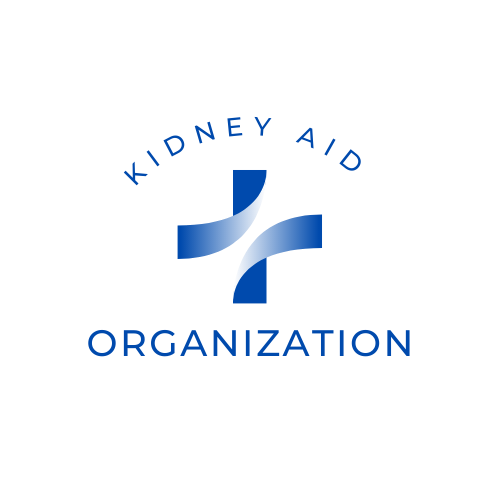Kidney disease, a condition that affects the functioning of one's kidneys, is a significant health concern globally. Among the demographic of 40-year-old women, understanding the prevalence and associated risk factors of kidney disease is crucial for early detection and prevention. In this article, we delve into the prevalence of kidney disease in this specific demographic, exploring its causes, symptoms, diagnostic methods, and potential interventions.
The Scope of Kidney Disease Among 40-Year-Old Women
Kidney disease encompasses a spectrum of conditions that affect the kidneys' ability to function properly, leading to complications such as reduced kidney function, fluid retention, electrolyte imbalances, and accumulation of waste products in the body. According to recent studies, kidney disease is increasingly recognized as a prevalent health issue among 40-year-old women, although the exact prevalence rates may vary depending on geographic location, ethnicity, and other demographic factors. Research suggests that women are generally at a higher risk of developing kidney disease compared to men, attributed to biological, hormonal, and socio-economic factors.Risk Factors and Contributing Factors
Several risk factors contribute to the development of kidney disease in 40-year-old women. These include but are not limited to:- High Blood Pressure (Hypertension): Hypertension is a leading cause of kidney disease among women in their 40s. The prolonged elevation of blood pressure can damage the blood vessels in the kidneys, impairing their ability to filter waste products and regulate fluid balance effectively.
- Diabetes Mellitus: Diabetes, particularly type 2 diabetes, significantly increases the risk of kidney disease in women. Persistent high blood sugar levels can damage the small blood vessels in the kidneys over time, leading to diabetic nephropathy—a common complication characterized by impaired kidney function.
- Obesity: Excess body weight, especially abdominal obesity, is associated with an increased risk of kidney disease in women. Obesity contributes to the development of hypertension, diabetes, and other metabolic abnormalities that adversely affect kidney function.
- Family History: Genetic predisposition plays a significant role in determining an individual's susceptibility to kidney disease. Women with a family history of kidney disease are at a higher risk of developing the condition themselves.
- Smoking and Alcohol Consumption: Unhealthy lifestyle habits such as smoking and excessive alcohol intake can contribute to the development and progression of kidney disease by impairing kidney function and increasing the risk of cardiovascular complications.
Screening and Diagnostic Methods
Early detection of kidney disease is paramount for timely intervention and management. Screening tests commonly used to assess kidney function and detect abnormalities include:- Blood Tests: Blood tests such as serum creatinine, blood urea nitrogen (BUN), and estimated glomerular filtration rate (eGFR) are routinely performed to evaluate kidney function. Elevated levels of creatinine and BUN in the blood may indicate impaired kidney function.
- Urinalysis: Urinalysis involves analyzing a urine sample for the presence of protein, blood, and other substances indicative of kidney damage. Proteinuria (presence of protein in the urine) is a common sign of kidney disease and warrants further evaluation.
- Imaging Studies: Imaging techniques such as ultrasound, CT scan, and MRI may be used to visualize the structure and anatomy of the kidneys, detect abnormalities, and assess kidney size and function.
- Kidney Biopsy: In certain cases, a kidney biopsy may be recommended to obtain a tissue sample for microscopic examination, aiding in the diagnosis of kidney diseases such as glomerulonephritis and autoimmune disorders.
Intervention and Management Strategies
Once diagnosed, the management of kidney disease in 40-year-old women typically involves a multidisciplinary approach aimed at slowing disease progression, relieving symptoms, and minimizing complications. Treatment strategies may include:Lifestyle Modifications
- Healthy Diet: Adopting a balanced diet rich in fruits, vegetables, whole grains, and lean proteins can help manage blood pressure, blood sugar levels, and body weight, thereby reducing the strain on the kidneys.
- Regular Exercise: Engaging in regular physical activity can improve cardiovascular health, promote weight loss, and enhance overall well-being, all of which are beneficial for kidney health.
- Smoking Cessation and Alcohol Moderation: Quitting smoking and reducing alcohol consumption can mitigate the risk of kidney disease progression and improve overall health outcomes.
Medications
- Antihypertensive Medications: Antihypertensive drugs such as angiotensin-converting enzyme (ACE) inhibitors and angiotensin receptor blockers (ARBs) are commonly prescribed to control high blood pressure and protect kidney function.
- Antidiabetic Medications: For women with diabetes, medications such as insulin, metformin, and sodium-glucose cotransporter-2 (SGLT2) inhibitors may be prescribed to regulate blood sugar levels and prevent diabetic nephropathy.
- Immunosuppressants: In cases of autoimmune kidney diseases such as lupus nephritis or vasculitis, immunosuppressive drugs may be used to suppress the immune system's abnormal response and reduce inflammation in the kidneys.
Renal Replacement Therapy
- Dialysis: In advanced stages of kidney disease where the kidneys fail to adequately filter waste products and excess fluid from the blood, dialysis may be required to artificially perform these functions. Hemodialysis and peritoneal dialysis are the two main types of dialysis commonly used.
- Kidney Transplantation: For eligible candidates, kidney transplantation offers the best long-term outcome compared to dialysis. A healthy kidney from a living or deceased donor is surgically implanted into the recipient's body, restoring normal kidney function.
Conclusion
In conclusion, kidney disease is a prevalent health issue among 40-year-old women, with various risk factors contributing to its development. Early detection through routine screening tests and prompt intervention are essential for managing the condition and preventing complications. By adopting a healthy lifestyle, adhering to prescribed medications, and undergoing appropriate medical interventions, women can effectively manage kidney disease and improve their quality of life. It is imperative for healthcare professionals to raise awareness about kidney health and empower women to take proactive steps towards maintaining optimal kidney function.Are you tired of living under the shadow of kidney disease? Are you yearning for a life free from the shackles of dialysis, kidney failure, and the looming threat of kidney transplants? If so, you're in the right place at the right time. Imagine waking up every morning with boundless energy, feeling rejuvenated and ready to take on the day. Envision a life where your kidneys are functioning optimally, and you no longer dread the burdensome routines of dialysis sessions. The Kidney Disease Solution Program is here to turn that vision into reality for you.


